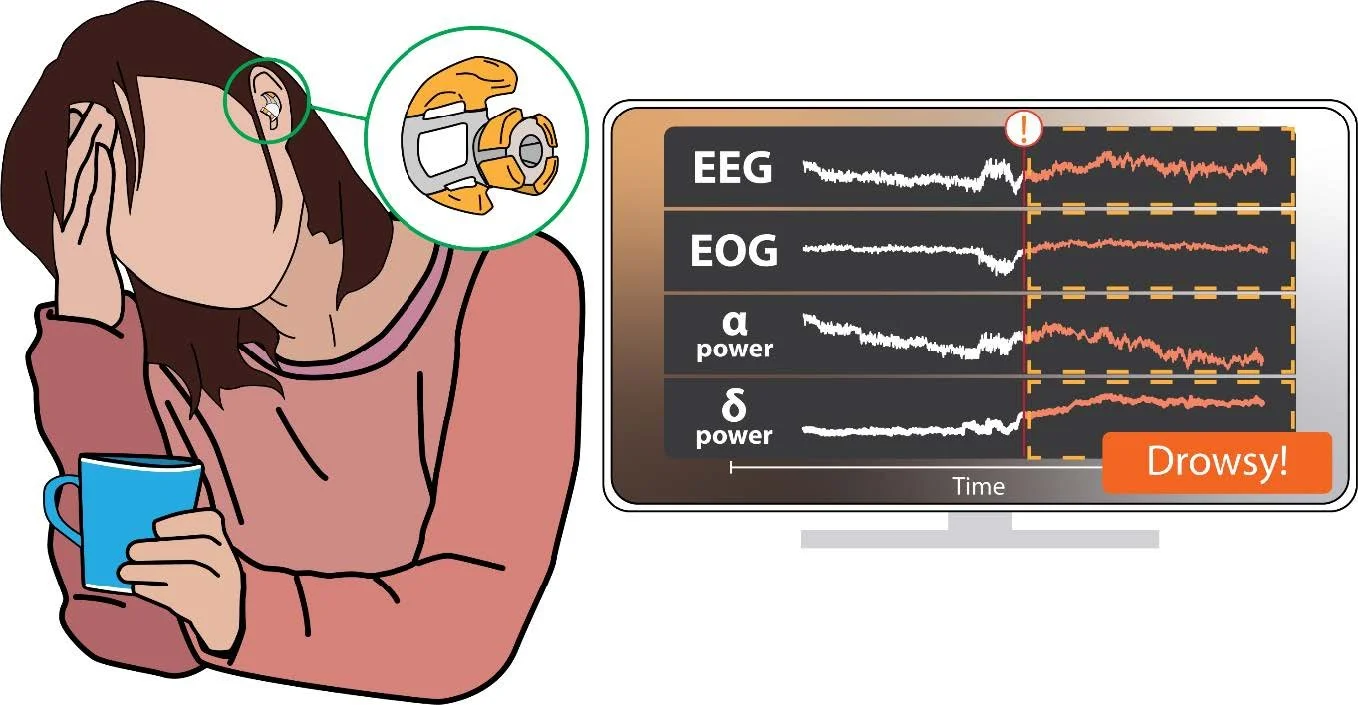Wireless Ear EEG ArXiv paper available
Ryan's paper on the wireless ear EEG to monitor drowsiness is available on ArXiv. Read it here.
Abstract:
Wireless, neural wearables can enable life-saving drowsiness, cognitive, and health monitoring for heavy machinery operators, pilots, and drivers. While existing systems use in-cabin sensors to alert operators before accidents, wearables may enable monitoring across many user environments. Current neural wearables are promising but limited by consumable electrodes and bulky, wired electronics. To improve neural wearable usability, scalability, and enable discreet use in daily and itinerant environments, this work showcases an end-to-end system for the first wireless, in-ear, dry-electrode earpiece for monitoring drowsiness. The proposed platform integrates additive manufacturing processes for gold-plated dry electrodes, user-generic earpiece designs, wireless electronics, and low-complexity machine learning algorithms. To evaluate the platform, thirty-five hours of ExG data were recorded across nine subjects performing repetitive drowsiness-inducing tasks. The data was used to train three, offline classifier models (logistic regression, support vector machine, and random forest) and evaluated with three training regimes (user-specific, leave-one-trial-out, and leave-one-user-out). The support vector machine classifier achieved an average accuracy of 93.2% while evaluating users it has seen before and 93.3% when evaluating a never-before-seen user. These results demonstrate for the first time that dry, 3D printed, user-generic electrodes can be used with wireless electronics to rapidly prototype wearable systems, which achieve comparable average accuracy (>90%) to existing state-of-the-art in-ear and scalp ExG systems that utilize wet electrodes and wired, benchtop electronics. Further, this work demonstrates the feasibility of using population-trained machine learning models in future, wearable ear ExG applications focused on cognitive health and wellness tracking.

